Are you looking for a way to warm up before twist poses? Interested in unwinding your spine and hips at the end of the day? If so, you might enjoy Supine Twist.
The Supine Twist is a posture I modified from Knee Down Twist (Supta Matsyendrasana).
In Knee Down Twist, you lay on your back with your left leg straight. Your right knee bends up towards your chest and crosses over midline. You can hold your right knee with your left hand and open your right arm out to the side, palm facing the ceiling.
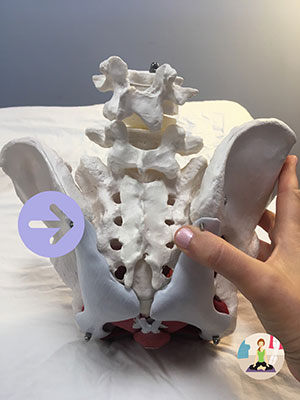
The sacroiliac joint is the joint between the sacrum and the ilium bones of the pelvis located just above the tailbone
Knee Down Twist can feel amazing for some people and sometimes be too intense on the sacroiliac joint. The sacroiliac joint is the place at the base of the spine joint where the spine attaches to the pelvic bones. Supine Twist gives you similar benefits of Knee Down Twist but without putting too much torque on the sacroiliac joint.
Let’s take a deeper dive into the creation of the shape of the posture, benefits, and ways to tailor this warm-up to your physical needs.
Create the physical shape of Supine Twist
All postures have a physical shape and an energetic feel. Here are instructions on how to achieve the physical shape of the posture:
- Lay on your back with your knees bent and feet flat.
- Inhale, and bring your knees to the left.
- Exhale, bring your knees back to center on the inhale.
- Repeat bringing your knees to the right.
Make Supine Twist work for you
The beauty of a yoga practice is its flexibility (no pun intended!). That is, you can make adjustments to the positioning and use props. Try some of the variations below and make it work for you.
Hold for a few breaths
Enjoying the stretch? Stay with your knees to the right for a few breaths before you switch sides.
Engage your core
In this pose, we use the exhale to bring the knees back to center. Exhaling automatically encourages our deepest layer of abdominal muscles, the deep stabilizing transverse abdominals, to engage.
We can accentuate this by adding a deep lower abdominal contraction as we bring the knees back up to center.
Where to put your arms
Your arm should be placed wherever is the most comfortable for you. Here are some options to try:
- at your side
- at 90 degrees with your palms up
- in “cactus arms” (90 degree shoulder and elbow bend)
- up in a V
- behind your head
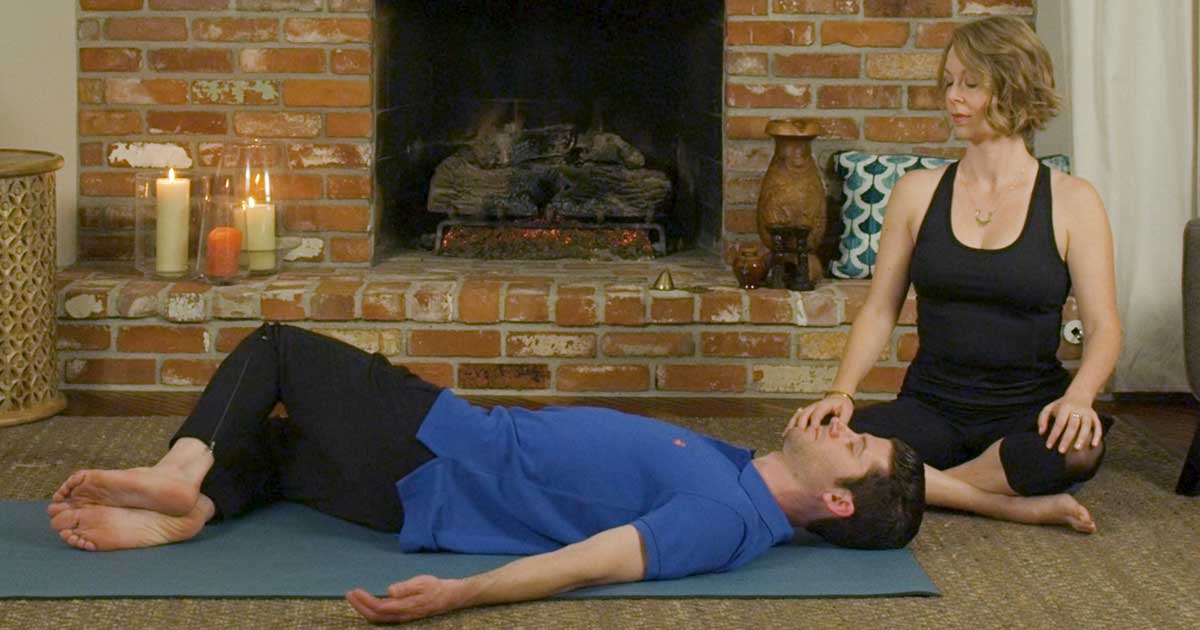
You can rest your arms by your side with palms facing up
Make it restorative
Transform Supine Twist into a restorative posture.
Place a bolster or blankets at the side of your body, so your knees land on the cushion. Taking some of the stretch out of this posture will allow you to stay in it for a few minutes without strain.
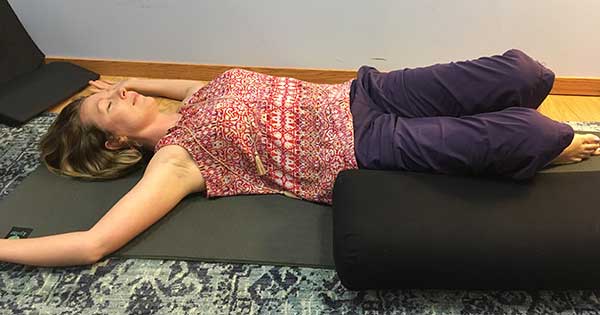
In this modification, a bolster is placed under the right knee. This limits spinal rotation, which might feel better for people with sacroiliac joint pain.
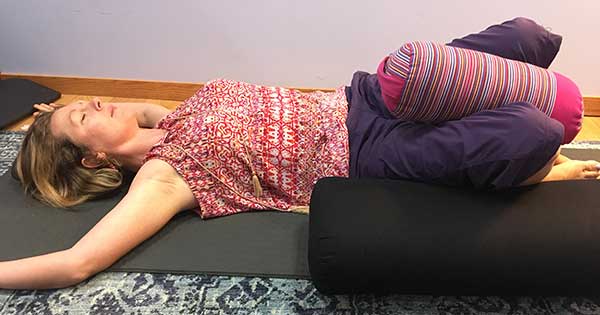
This modification is nice for people with limited spinal and hip rotation. In this photo, there is a bolster under the right knee to limit spinal rotation and pillow between the knees to limit left hip internal rotation
This is also a great option for people who have limitations in spinal rotation.
Why choose Supine Twist?
Flexibility
Supine Twist increases flexibility of the:
- back
- hips
- ribs
- upper back/shoulders
Downregulation
Supine Twist also offers a moment to quiet the nervous system. Taking a pause in this posture, especially when paired with paced breathing or the dirgha (3 part) breath, calms the sympathetic nervous system.
Digestive support
For students with gastrointestinal issues, this can be a helpful posture for releasing gas.
Starting with the knees left (lengthening the fascia above the ascending colon) and finishing right (above the descending colon) might be helpful in aiding the movement process.
Who is this posture good for?
This posture is particularly for helping manage constipation, overactive bladder, interstitial cystitis/painful bladder syndrome, and dysmenorrhea.
Additionally, most adults need more opportunities to move in a variety of ways as we are often stuck in prolonged sitting postures during the day.
Enjoy and move easefully!
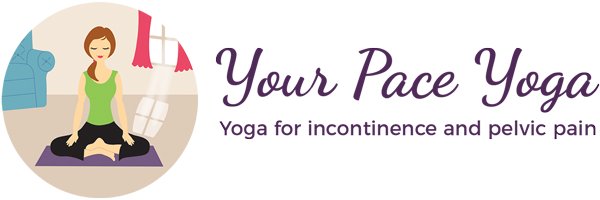
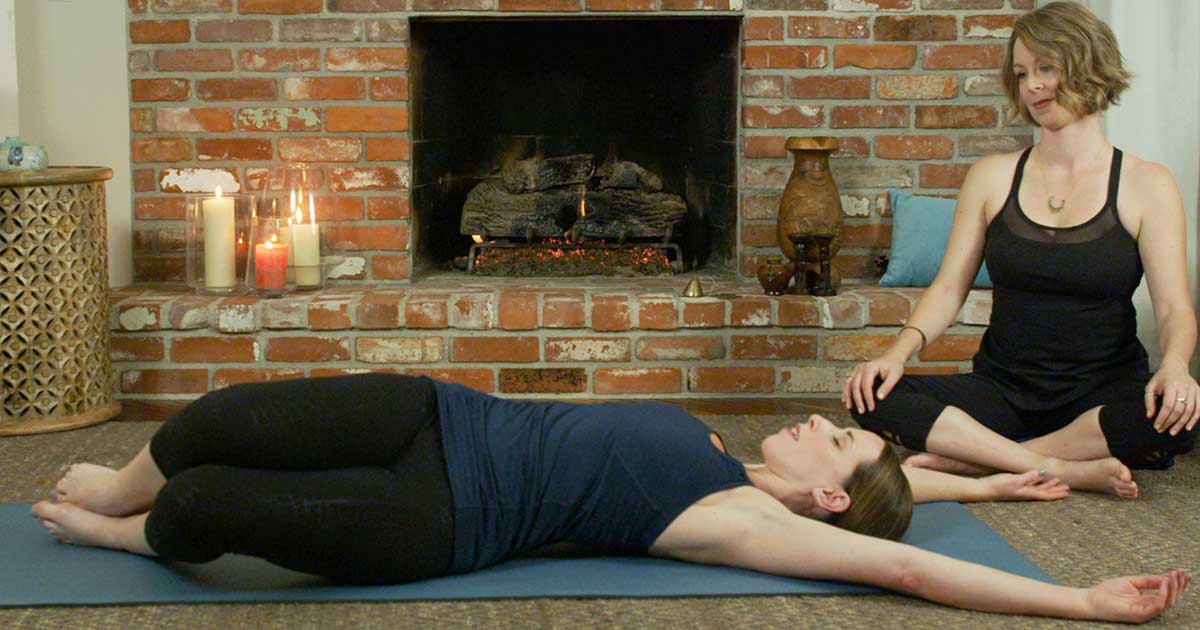
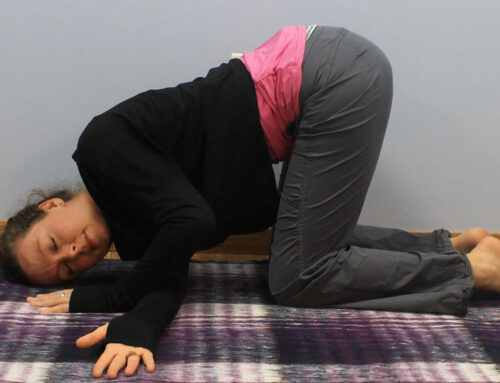
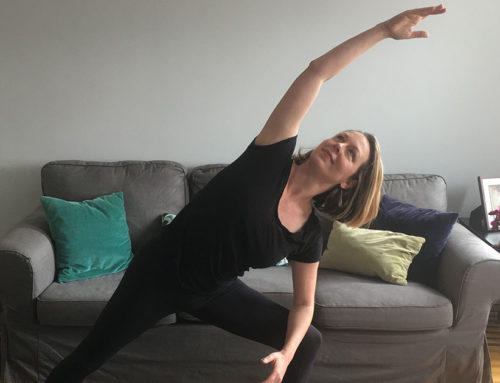
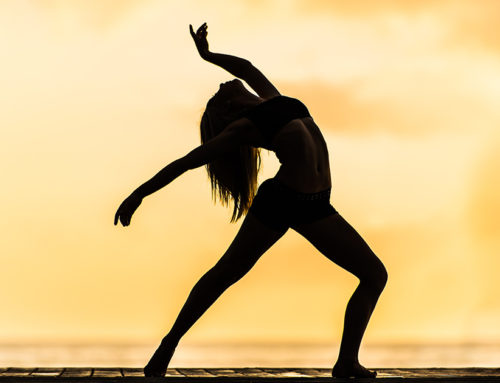
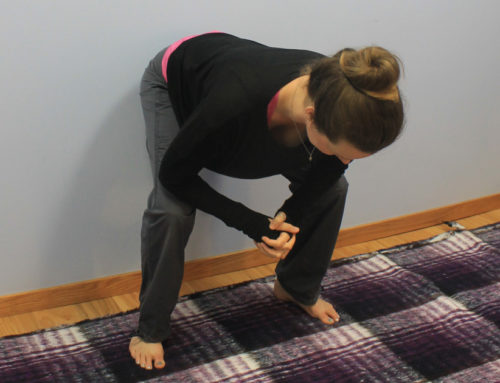
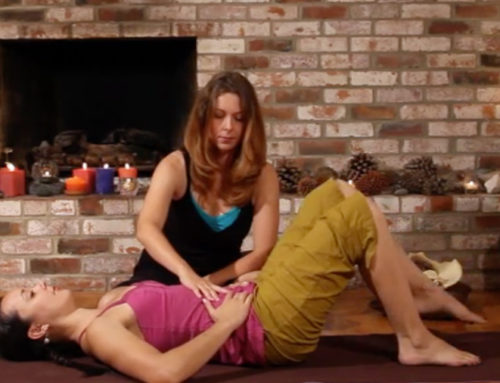
[…] joint is the place at the base of the spine joint where the spine attaches to the pelvic bones. Supine Twist gives you similar benefits of Knee Down Twist but without putting too much torque on the sacroiliac […]